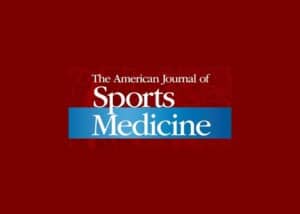
The ability of mesenchymal stem cells (MSCs) to differentiate into multiple musculoskeletal cell types, release proregenerative growth factors, and inhibit local immune responses holds great promise for musculoskeletal tissue engineering and the treatment of sports-related pathologic conditions. Promising in vitro data have further fueled enthusiasm for MSC-based therapies, and more than 150 clinical trials are registered (at clinicaltrials.gov) evaluating the use of MSCs as therapeutic agents in the treatment of musculoskeletal conditions, including anterior cruciate ligament reconstruction and repair, meniscal injury, tendinopathy, chondral defects, and osteoarthritis.
Considerable confusion exists regarding the nomenclature used to describe mesenchymal progenitors. The term stem cells should be reserved strictly for populations of cells that demonstrate multipotency and self-renewal in vivo. However, the International Society for Cellular Therapy (ISCT) agreed on a number of characteristics to define MSCs, including plastic adherence, mesodermal multipotency, and the expression of defined cell surface markers. Nevertheless, the term MSCs encompasses cell populations with heterogeneous phenotypes and functional distinctions isolated from multiple tissues by use of different methods. The names that have been assigned to these cells include multipotent adult progenitor cells, marrow isolated multilineage inducible cells,10 and multipotent adult stem cells. Furthermore, the relationship of these populations to each other remains unclear. Given this heterogeneity, accurate descriptions of the prove- nance, preparation methods, and characteristics of MSC populations are essential to understand the nature of the cells used.
In addition to ambiguity regarding MSC nomenclature, consensus is lacking regarding the optimal preparation, source, delivery, and dosing of MSCs. Currently, the most frequently delivered MSC preparations include culture-derived cells isolated from either adipose tissue (ADP-MSCs) or bone marrow (BM-MSCs). Bone marrow aspirate concentrate (BMAC) is an alternative strategy for delivering progenitor cells. However, as these strategies do not require cell culture, they do not meet the defining criteria for MSCs set by the ISCT. The US Food and Drug Administration (FDA) considers the cells delivered within BMAC to be minimally manipulated; however, BM-MSC and ADP-MSC preparations, which are reliant on a period of laboratory culture and expansion, are considered under entirely distinct regulatory criteria. In addition to the characteristics of these different formulations, numerous factors critical to the effect of biologic use, such as the dos- age and timing of delivery, remain virtually unexplored. The problem is exacerbated by the lack of information that characterizes most studies, with publications not providing sufficient experimental detail to permit the reader to critically evaluate the results or enable replication of the experiments. This is a particular challenge given the complexity of MSC-based therapies and the lack of familiarity of many clinicians with stem cell biology.
Expert consensus has been reached recently regarding those items that may critically influence outcome and should be reported by clinical studies evaluating MSC-based therapies in orthopaedics and sports medicine. However, the comprehensiveness with which the existing clinical literature reports MSC preparation protocols and composition has not been assessed. We therefore set out to perform a systematic review of clinical studies evaluating MSC-based therapies in the treatment of musculoskeletal pathologic conditions in order to establish levels of reporting. We hypothesized that the reporting of both the formulation and delivery of MSC preparations would be varied and inconsistent.
Full Article: Reporting of Mesenchymal Stem Cell Preparation Protocols and Composition
